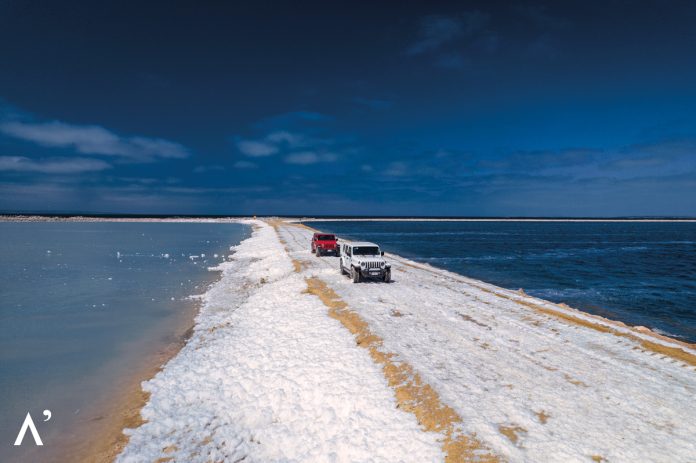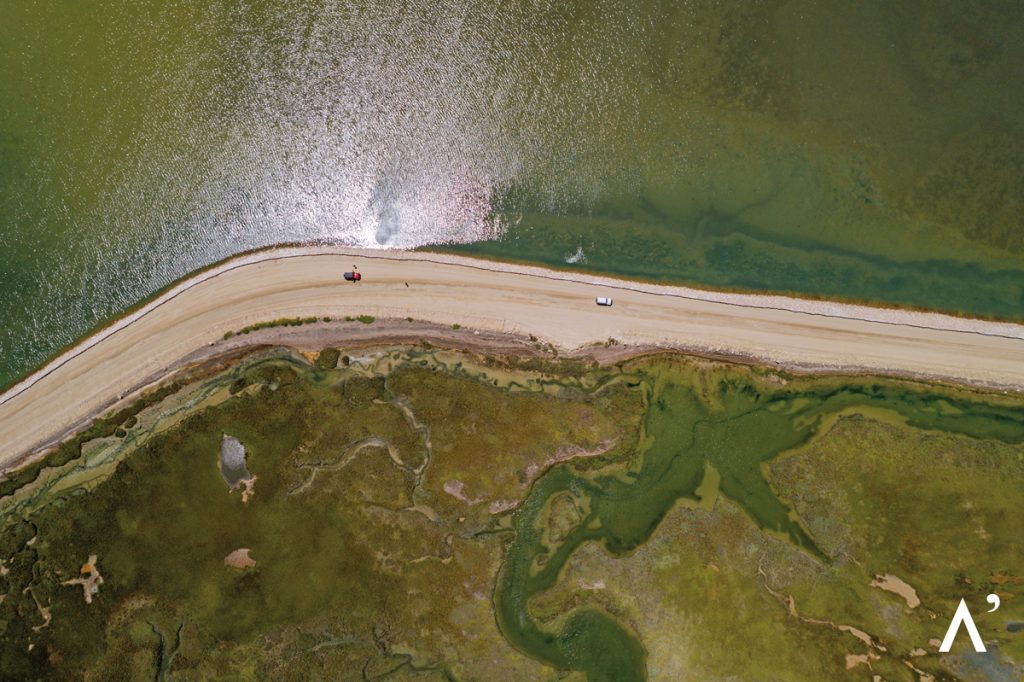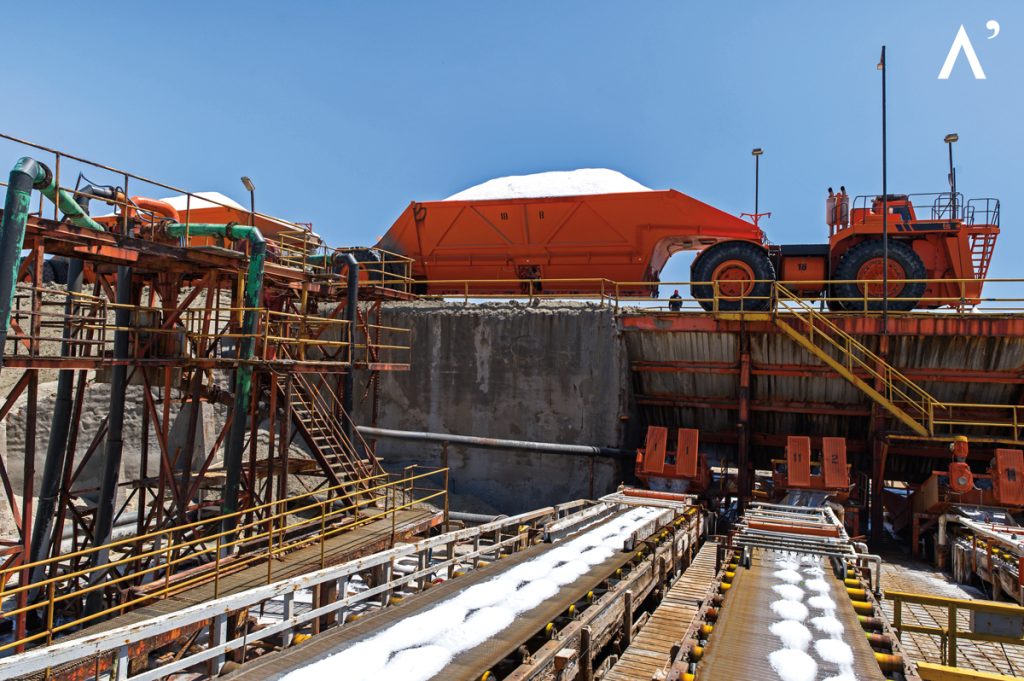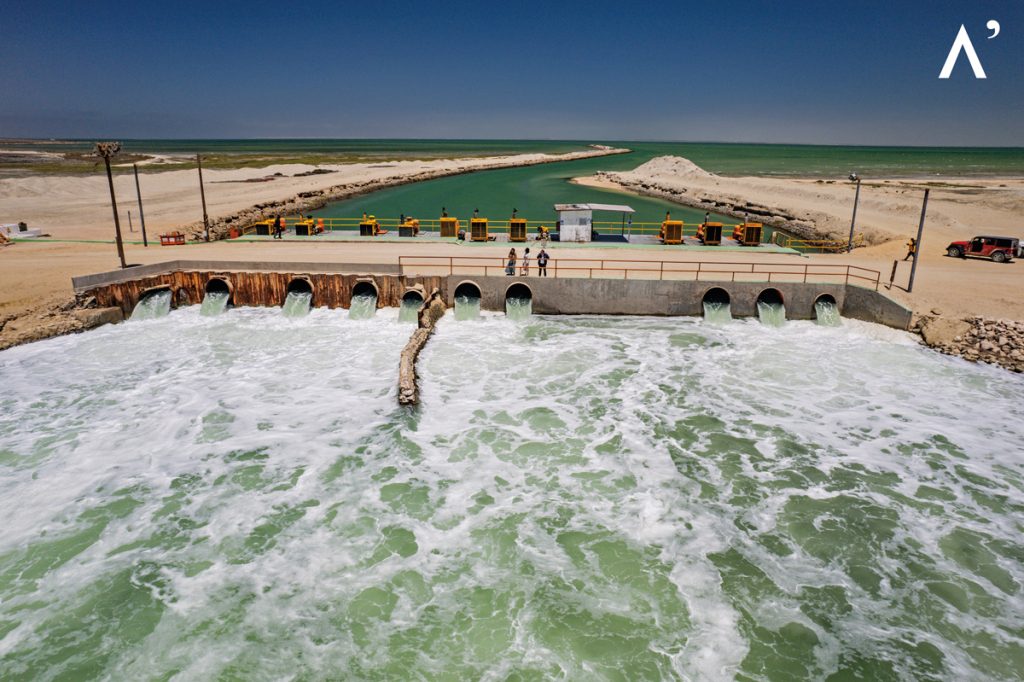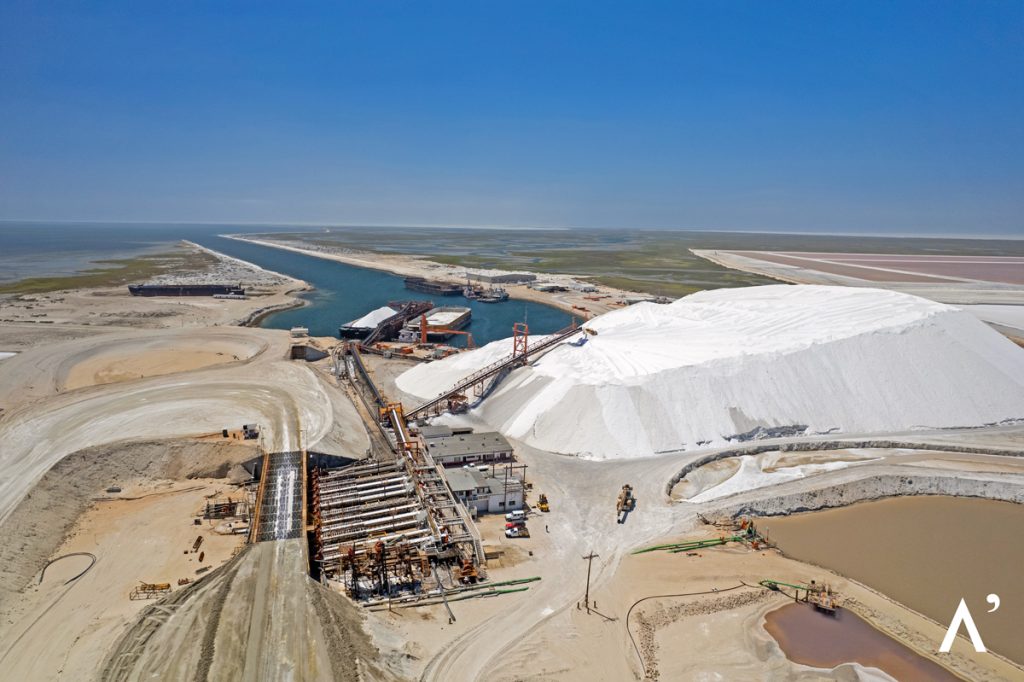Several years ago, in issue #26, Laura Bueno wrote an article titled “A Fragment so Small with a Millenary History”, in which she mentioned the Salt Exporter in Guerrero Negro. We were pleasantly surprised when the Director emailed Laura, inviting us to visit. It took 38 editions for us to finally make that travel plan happen, so we were very anxious to discover it.
After leaving Tortugas Bay in the afternoon, we spent almost 4 hours on the road before reaching the Malarrimo Hotel in Guerrero Negro. The hotel features a lounge with various objects found on the beach of Malarrimo.
The following day, everything was well organized by Alicia Lopez, the Production Assistant at Exportadora de Sal. She coordinated our visit and the interview with Mr. Gerardo Santiago Murillo, the Production Manager. Interestingly, this year marks the 70th anniversary of the company’s founding (April 7, 1954). It took several years for the company to become fully Mexican-owned.
After gaining access, Mr. Santiago suggested that the ideal way to familiarize ourselves with the operation would be to begin the tour at the seawater pumping area. According to their logistical process, we drove 62 kilometers into the facilities to initiate the tour.
Approximately halfway through our journey, we noticed that the “El bordo del atravesado” area was situated between two seas. The foam created by the churning seawater and salt washed over it in a remarkable way. The visual spectacle of the colourful and textured scenery under the natural lighting was so captivating that we couldn’t resist stopping to fly the drone and take pictures. .
After more than an hour, we arrived at the pumping area. We saw how the seawater transfer works and were amazed by the size of the machines. All the people we collaborated with were very gracious and welcoming to our presence.
We were pleased to see the way Exportadora de Sal operates. The white of the salt makes magic in the place; everything shines. In the photos, you can see the whole process the collaborators proudly perform in detail.
The magic of salt is achieved through the combination of seawater, wind, and sun.
We visited the Exportadora de Sal in approximately 6 hours. It’s addictive to witness everything working perfectly. But we had to say goodbye. Franco Cupello, our guide, was waiting for us to visit two more tourist attractions in Guerrero Negro: Los Amargos and the Old Lighthouse.
We had no idea where we were walking when we arrived at Los Amargos and got out of the car. However, when we began to observe the cracks with turquoise water, we knew we were in front of a natural phenomenon. Franco explained that these bodies of water evaporate until they are left with a higher salt concentration. The visual impact they create in the midst of the desert is truly unbelievable.
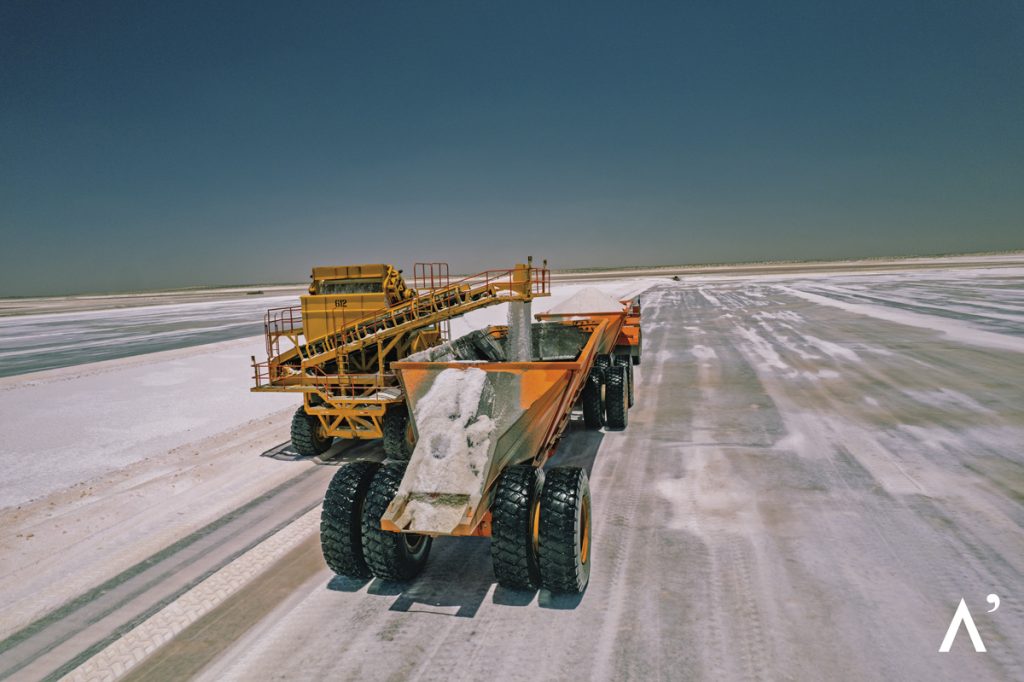
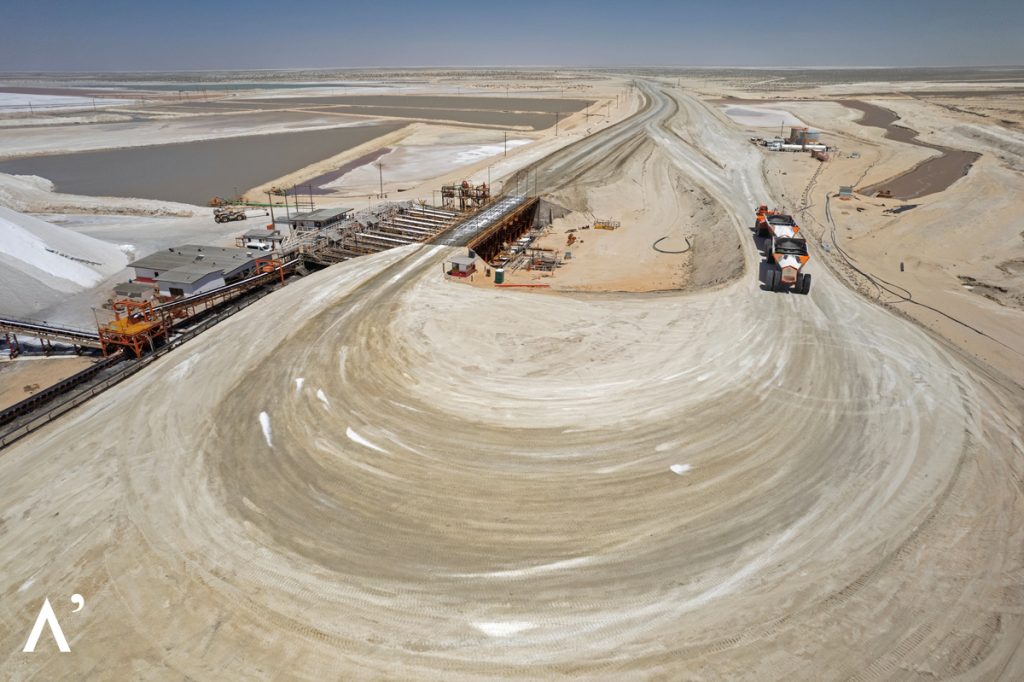
With the drone and cameras, we stood there for more than an hour, looking for the best angles and having fun with the visual manipulation we wanted to achieve with such unique elements.
After stowing the equipment, we began the 40-minute trek to the Faro Viejo. It’s a must-visit; take your time to enjoy the beautiful dunes, remnants of the lighthouse, and the shipping dock of Exportadora de Sal. Everywhere you turn, it is beautiful and totally Instagrammable.
To add the perfect finishing touch to our trip, we stopped at the border with Baja California. After a short drive, we took a picture right on the state border. The signs showed us that from there, it was 639 km to Ensenada and 773 km to La Paz. We truly wanted to go to Ensenada; it looked closer, at least to us. But that will be another story!
In the meantime, we fulfilled one more dream by travelling through Guerrero Negro in Mulegé.
Unlocking the Facts of the Salt Exporter: 13 Fascinating Facts You Need to Know!
- As a producing unit, it is the largest exporter in the world.
- They are preparing to produce 8 million tons of salt by 2030.
- Laguna Ojo de Liebre seawater is about 350 million cubic meters of evaporated water over 20 thousand hectares.
- The vessels that produce the salt can measure up to 100 hectares.
- From the time of pumping, seawater takes 2.25 to 2.42 years to transform into salt.
- When the salt layers in the vessels are 18 cm thick, they start harvesting.
- The trucks weigh 220 tons and can transport up to 220 tons.
- They have 20 hectares of evaporation process.
- Improving the processes is one of the main objectives.
- They have annual training programs.
- Exportadora de Sal has 1,200 workers between the Guerrero Negro and Isla de Cedros operations.
- Five products are marketed: regular salt, coarse salt, fine salt, ASTM salt, and low bromine salt.
- The whole process of producing salt is very friendly, no chemicals are used, and everything is natural.


